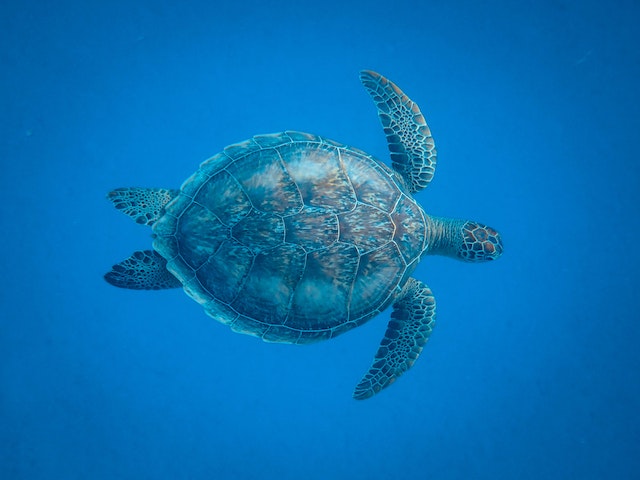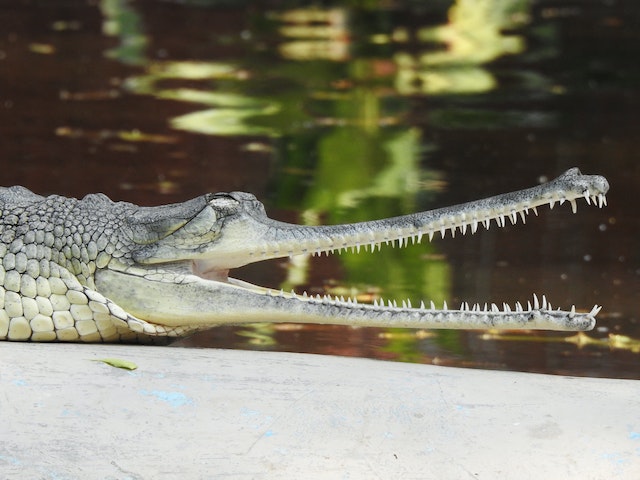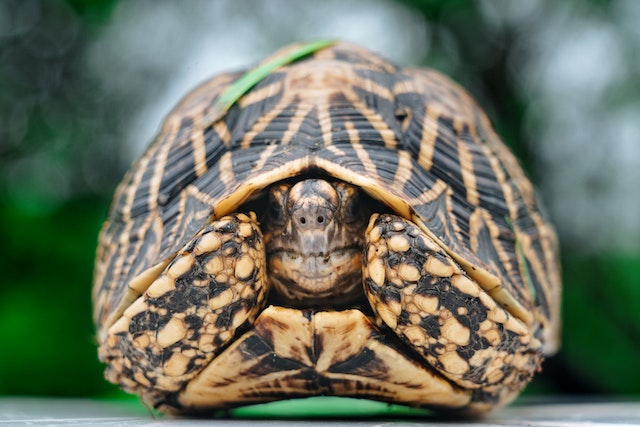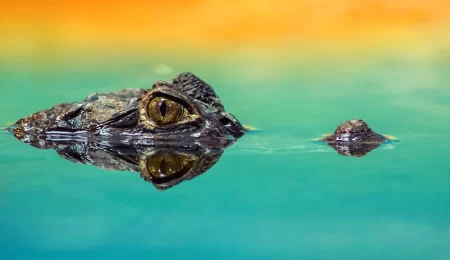Reptiles that cannot be traded in the international market
Reptiles are unique creatures that have fascinated humans for centuries. Some of the world’s most beautiful and intriguing creatures belong to this group of animals. However, the illegal trade in reptiles is a serious threat to their survival, and many species are on the brink of extinction due to human activities. In this article, we will discuss reptiles that cannot be traded in the international market, their reasons, and their conservation status.
What is the illegal wildlife trade?
The illegal wildlife trade refers to the buying and selling of wild animals and plants, including reptiles, without proper permits or licenses. It is a global problem that threatens the survival of many species. The illegal wildlife trade is a lucrative business, worth billions of dollars annually. This illegal trade is driven by demand for products made from wildlife, including fashion accessories, traditional medicines, and exotic pets.
Why are reptiles traded illegally?
Reptiles are traded illegally for various reasons. Some are taken from the wild to be kept as exotic pets, while others are hunted for their skin, meat, or other body parts. Reptile leather is highly valued in the fashion industry, and some species are hunted to extinction for this purpose. The illegal trade in reptiles is also driven by traditional medicine, where the animals are used for their supposed medicinal properties.
Reptiles That Cannot Be Traded in the International Market
There are many species of reptiles that cannot be traded in the international market due to their conservation status. These reptiles are protected by international and national laws to prevent their illegal trade and to promote their conservation. Here are some of the reptiles that cannot be traded in the international market:
Sea Turtles

Photo by Francesco Ungaro
Sea turtles are another group of reptiles that cannot be traded internationally due to their threatened status. All seven species of sea turtles are listed as endangered or threatened under the Endangered Species Act, and international trade in sea turtle products is banned under the Convention on International Trade in Endangered Species of Wild Fauna and Flora (CITES).
Despite these protections, sea turtles continue to face numerous threats, including habitat loss, climate change, pollution, bycatch in fishing gear, and poaching. The demand for sea turtle products, such as their shells, meat, and eggs, also continues to fuel illegal trade in many parts of the world.
Conservation efforts are critical for protecting sea turtles and their habitats. Protecting nesting beaches, reducing bycatch in fishing gear, promoting sustainable fishing practices, and enforcing laws and regulations against poaching and illegal trade are all important strategies for conserving sea turtles.
Individuals can also play a role in protecting sea turtles by reducing their use of plastic and other pollutants that can harm sea turtle habitats, supporting organizations that work to protect sea turtles, and advocating for stronger laws and regulations to protect these important species.
By working together, we can help to ensure that sea turtles are protected and that they continue to play their important ecological roles in the world’s oceans.
Komodo Dragons

Photo by Jeffry Surianto
Komodo dragons, the world’s largest living lizard, cannot be traded internationally due to their protected status. These unique reptiles are only found on a few islands in Indonesia, and their population has declined due to habitat loss, poaching, and hunting.
Komodo dragons are listed as a vulnerable species under the International Union for Conservation of Nature (IUCN) Red List, and international trade in these animals is prohibited under CITES. However, illegal trade still persists, fueled by the demand for live animals, skins, and other body parts.
Conservation efforts are underway to protect Komodo dragons and their habitats. This includes habitat restoration, anti-poaching measures, and public education campaigns to raise awareness about the importance of conserving these unique and iconic animals.
In addition to these efforts, there are also opportunities for ecotourism, which can provide economic benefits to local communities while also promoting conservation. By supporting responsible and sustainable tourism practices, we can help to ensure that Komodo dragons and other endangered species are protected for future generations to enjoy.
Overall, the protection of Komodo dragons and other endangered species requires a combination of international cooperation, local conservation efforts, and public awareness and education. By working together, we can help to ensure that these amazing animals are preserved for generations to come.
Gharials

Photo by Sharath G.
Gharials, a critically endangered species of crocodile found in India and Nepal, cannot be traded internationally due to their protected status. Gharials are one of the longest and most unique crocodile species, characterized by their long, thin snouts filled with over 100 sharp teeth.
Gharials are listed as critically endangered on the International Union for Conservation of Nature (IUCN) Red List, and their population has declined dramatically due to habitat loss, hunting, and poaching for their skin and other body parts.
International trade in gharials is prohibited under the Convention on International Trade in Endangered Species of Wild Fauna and Flora (CITES), which regulates the trade of endangered species to ensure their survival in the wild. Despite this, illegal trade in gharials still occurs, driven by the demand for their skin and other body parts in the traditional medicine trade.
Efforts to conserve gharials include habitat protection, anti-poaching measures, captive breeding and reintroduction programs, and public awareness campaigns to promote the importance of conservation. In addition, responsible tourism practices can help to support local conservation efforts while providing economic benefits to local communities.
Overall, the protection of gharials and other endangered species requires a combination of international cooperation, local conservation efforts, and public awareness and education. By working together, we can help to ensure that these amazing animals are preserved for future generations to enjoy.
Indian Star Tortoise

Photo by Ankit Patel
The Indian Star Tortoise, scientifically known as Geochelone elegans, is a small to medium-sized tortoise species native to India and Sri Lanka. Unfortunately, these adorable and charming creatures are often targeted by the illegal wildlife trade due to their attractive appearance and popularity as exotic pets.
The Indian Star Tortoise has a unique star pattern on its shell, which makes it a highly sought-after species in the international market. However, due to the high demand for this species, it has become critically endangered, and its population is declining rapidly.
To combat the illegal wildlife trade and preserve the Indian Star Tortoise population, the Indian government has prohibited their exportation. This means that the Indian Star Tortoise cannot be traded in the international market legally. The prohibition was put in place to protect the species from further exploitation and to preserve its population.
In addition to the Indian Star Tortoise, several other reptile species are also prohibited from international trade. These include the Burmese Star Tortoise, the Madagascar Plated Lizard, and the Green Tree Python. These species are also threatened due to the illegal wildlife trade, and their populations are declining rapidly.
It is essential to note that the illegal wildlife trade is not only a threat to the survival of these species but also to the ecosystem as a whole. The illegal capture and trade of wildlife can lead to imbalances in the natural environment, which can have far-reaching and long-lasting consequences.
Radiated Tortoise

The Radiated Tortoise, scientifically known as Astrochelys radiata, is a critically endangered species of tortoise native to Madagascar. The Radiated Tortoise is a large species of tortoise that is named for the distinctive radiating pattern on its shell. Unfortunately, these beautiful creatures are often targeted by the illegal wildlife trade due to their unique appearance and high demand as exotic pets.
To combat the illegal wildlife trade and preserve the Radiated Tortoise population, the government of Madagascar has prohibited their exportation. This means that the Radiated Tortoise cannot be traded in the international market legally. The prohibition was put in place to protect the species from further exploitation and to preserve its population.
The Radiated Tortoise is one of the most sought-after species in the illegal wildlife trade due to its unique appearance and the fact that it is slow-moving, making it easier to capture. Despite the prohibition on their international trade, the Radiated Tortoise population is still under threat due to poaching and habitat loss.
It is essential to note that the illegal wildlife trade is not only a threat to the survival of the Radiated Tortoise but also to the ecosystem as a whole. The illegal capture and trade of wildlife can lead to imbalances in the natural environment, which can have far-reaching and long-lasting consequences.
In conclusion, the Radiated Tortoise cannot be traded in the international market legally. The species is critically endangered due to the illegal wildlife trade, and its population is rapidly declining. It is crucial to support conservation efforts to protect these species and preserve the natural environment. The prohibition on the international trade of the Radiated Tortoise and other endangered species is a significant step towards protecting their populations and preventing their extinction.
Madagascar Ploughshare Tortoise

Photo by Magda Ehlers
The Madagascar Ploughshare Tortoise, also known as the Angonoka Tortoise, is a critically endangered species of tortoise endemic to Madagascar. These beautiful creatures are highly valued in the illegal wildlife trade due to their unique appearance, slow growth rate, and long lifespan. However, the government of Madagascar has prohibited their exportation to protect their population from further exploitation.
The Madagascar Ploughshare Tortoise is considered one of the rarest tortoise species in the world, with only a few hundred remaining in the wild. The species is listed as critically endangered by the International Union for Conservation of Nature (IUCN) due to habitat loss and poaching for the illegal wildlife trade. The tortoise is also threatened by the illegal logging of their native forests and the human encroachment on their habitat.
To preserve the species, the government of Madagascar has taken strict measures to protect the Madagascar Ploughshare Tortoise. It is illegal to export them, and they are protected under the country’s laws. The prohibition on their international trade has helped to reduce the demand for the species, and consequently, the number of tortoises being captured and sold illegally.
It is essential to note that the illegal wildlife trade not only threatens the survival of the Madagascar Ploughshare Tortoise but also disrupts the natural ecosystem. The loss of a species can have cascading effects on the environment, leading to imbalances in the food chain and the disappearance of other species.
In conclusion, the Madagascar Ploughshare Tortoise cannot be traded internationally due to the government’s prohibition on their exportation. The species is critically endangered due to habitat loss and poaching for the illegal wildlife trade. It is crucial to support conservation efforts to protect these species and preserve the natural environment. We must work together to end the illegal wildlife trade and protect the Madagascar Ploughshare Tortoise and other endangered species for future generations.
Chinese Alligator

Chinese Alligator (Alligator sinensis) is a critically endangered species that is native to China. Due to its small population and restricted distribution, this species is listed under Appendix I of the Convention on International Trade in Endangered Species of Wild Fauna and Flora (CITES).
As a result, the Chinese Alligator cannot be traded internationally. It is illegal to sell or purchase this species or any products derived from it, such as its skin, meat, or organs. The trade ban is in place to protect the remaining populations of Chinese Alligators in the wild and prevent them from becoming extinct.
In addition to the international trade ban, China has also implemented national laws and regulations to protect this species. The Chinese Alligator is protected under the Chinese Wildlife Protection Law and is classified as a Class I Protected Species, the highest level of protection in China.
Efforts have been made to conserve and breed the Chinese Alligator in captivity, but due to habitat loss and human activities such as hunting, the wild population remains critically endangered. The trade ban is crucial in ensuring the survival of this species and its continued protection.
It is important for individuals to educate themselves and others about the conservation status of endangered species such as the Chinese Alligator and to take actions to support conservation efforts. This can include supporting organizations that work to protect endangered species, advocating for stronger laws and regulations to protect wildlife, and making responsible consumer choices to avoid products that contribute to wildlife trafficking.
Egyptian Tortoise

The Egyptian Tortoise (Testudo kleinmanni) is a small, critically endangered species of tortoise that is native to the deserts of North Africa and the Middle East. Due to habitat loss, collection for the pet trade, and other human activities, the Egyptian Tortoise has experienced a significant decline in its population in the wild.
As a result, the Egyptian Tortoise is listed under Appendix II of the Convention on International Trade in Endangered Species of Wild Fauna and Flora (CITES), which means that it can be traded internationally, but under strict regulations. However, due to the continued decline of this species, some countries have imposed a trade ban on the Egyptian Tortoise, meaning that it cannot be legally traded or exported from those countries.
For example, Egypt, where the Egyptian Tortoise is native, has imposed a complete trade ban on this species to protect it from exploitation and prevent further population declines. Other countries, such as the United States and the United Kingdom, have also implemented regulations to restrict the import and trade of Egyptian Tortoises.
It is important to note that the illegal trade of Egyptian Tortoises still occurs, and this species remains highly valued in the pet trade market. However, by enforcing trade bans and regulations, and educating the public about the importance of conservation, we can work towards protecting this species and ensuring its survival in the wild.
Individuals can support conservation efforts for the Egyptian Tortoise by avoiding the purchase of wild-caught tortoises, supporting organizations that work to protect endangered species, and advocating for stronger laws and regulations to protect wildlife. By working together, we can help to protect the Egyptian Tortoise and other endangered species from exploitation and extinction.
Jamaican Iguana

The Jamaican Iguana (Cyclura collei) is a critically endangered species of lizard that is endemic to Jamaica. Due to habitat loss, hunting, and other human activities, the Jamaican Iguana was believed to be extinct until a small population was rediscovered in the 1990s.
In order to protect this species from further exploitation and to facilitate its recovery, the Jamaican government has implemented a trade ban on the Jamaican Iguana. This species is also listed under Appendix I of the Convention on International Trade in Endangered Species of Wild Fauna and Flora (CITES), which means that it cannot be traded internationally for commercial purposes.
The trade ban and listing under CITES have helped to ensure that the Jamaican Iguana is not subject to exploitation in the pet trade or in other forms of international trade. Additionally, efforts to protect and restore the habitat of the Jamaican Iguana have helped to increase its population and range in recent years.
Despite these conservation efforts, the Jamaican Iguana remains one of the rarest and most endangered lizards in the world. Continued efforts to protect this species, including habitat restoration, captive breeding programs, and public education, will be critical to ensuring its long-term survival.
Individuals can support conservation efforts for the Jamaican Iguana by avoiding the purchase of wild-caught iguanas, supporting organizations that work to protect endangered species, and advocating for stronger laws and regulations to protect wildlife. By working together, we can help to protect the Jamaican Iguana and other endangered species from extinction.
Borneo Earless Monitor Lizard

The Borneo earless monitor lizard, also known as Lanthanotus borneensis, is a rare and unique lizard species found in Borneo. This species is known for its distinct lack of external ear openings and its small size, reaching only up to 25 centimeters in length.
Due to its rarity and uniqueness, the Borneo earless monitor lizard has been targeted by the exotic pet trade. However, to protect the species from further exploitation and to facilitate its conservation, the Bornean government has implemented a trade ban on the Borneo earless monitor lizard.
In addition to the national trade ban, the Borneo earless monitor lizard is also listed under Appendix II of the Convention on International Trade in Endangered Species of Wild Fauna and Flora (CITES). This listing means that trade in this species is highly regulated and monitored, and that it can only be traded internationally under certain circumstances, such as for scientific research or for captive breeding purposes.
These measures have helped to ensure that the Borneo earless monitor lizard is not subject to overexploitation in the pet trade or other forms of international trade. Additionally, efforts to protect and restore the habitat of this species have helped to increase its population and range in recent years.
Despite these conservation efforts, the Borneo earless monitor lizard remains a threatened species, with a highly restricted range and declining population. Continued efforts to protect this species, including habitat conservation, captive breeding programs, and public education, will be critical to ensuring its long-term survival.
Individuals can support conservation efforts for the Borneo earless monitor lizard by avoiding the purchase of wild-caught specimens, supporting organizations that work to protect endangered species, and advocating for stronger laws and regulations to protect wildlife. By working together, we can help to protect the Borneo earless monitor lizard and other endangered species from extinction.
Conservation of Endangered Reptiles
Reptiles are an incredibly diverse and important group of animals, playing critical roles in ecosystems around the world. However, many reptile species are threatened with extinction due to a range of human activities, including habitat destruction, climate change, and overexploitation for the pet trade or traditional medicine.
Conservation efforts are critical to protecting these valuable species and ensuring that they continue to play their important ecological roles. Here are some key strategies for conserving endangered reptiles:
- Protect and restore habitats: The destruction and degradation of habitats is a major threat to reptile species. Protecting and restoring natural habitats is critical to ensuring that reptiles have the space and resources they need to survive and reproduce.
- Combat climate change: Climate change is a major threat to reptile species around the world, as rising temperatures and changing precipitation patterns can lead to declines in population and range. Efforts to reduce greenhouse gas emissions and to help species adapt to changing conditions are critical to ensuring their survival.
- Address overexploitation: Many reptile species are targeted by the exotic pet trade or for traditional medicine, leading to declines in population and range. Stronger laws and regulations, as well as public education campaigns, are needed to reduce demand for these products and to prevent further exploitation.
- Conduct research and monitoring: Scientific research and monitoring are critical to understanding the ecology and population dynamics of endangered reptile species, as well as to assessing the effectiveness of conservation efforts.
- Engage local communities: Local communities play a critical role in the conservation of endangered reptiles, as they often live in or near critical habitats and may rely on reptiles for food, medicine, or other resources. Engaging with local communities, providing alternative livelihoods, and supporting community-led conservation efforts can help to ensure the long-term success of conservation initiatives.
In addition to these strategies, public support for conservation efforts is critical to ensuring the survival of endangered reptile species. Individuals can support conservation efforts by supporting organizations that work to protect endangered species, reducing their carbon footprint, and advocating for stronger laws and regulations to protect wildlife.
By working together, we can help to ensure that endangered reptile species are protected and that they continue to play important ecological roles for generations to come.
Conclusion
In conclusion, the international trade in wildlife poses a significant threat to many reptile species around the world. While some reptile species can be sustainably harvested and traded, others are threatened with extinction and must be protected. The species discussed in this article, including the Indian star tortoise, radiated tortoise, Madagascar ploughshare tortoise, Chinese alligator, Egyptian tortoise, Jamaican iguana, and Borneo earless monitor lizard, are just a few examples of reptiles that cannot be traded in the international market due to their threatened status.
Conservation efforts are critical to protecting these and other endangered reptile species. Protecting and restoring natural habitats, combating climate change, addressing overexploitation, conducting research and monitoring, and engaging local communities are all important strategies for conserving endangered reptiles.
As individuals, we can also do our part to support conservation efforts by reducing our carbon footprint, supporting organizations that work to protect endangered species, and advocating for stronger laws and regulations to protect wildlife.
By working together, we can help to ensure that endangered reptile species are protected and that they continue to play their important ecological roles for generations to come.
Convention on International Trade in Endangered Species of Wild Fauna and Flora (CITES)
The Convention on International Trade in Endangered Species of Wild Fauna and Flora (CITES) is a global treaty that regulates the international trade of endangered species to ensure their survival in the wild. CITES was established in 1975 and is administered by the United Nations Environment Programme (UNEP).
The goal of CITES is to prevent the overexploitation of endangered species due to international trade. The treaty does this by controlling the trade of species listed on its three appendices, with Appendix I listing species threatened with extinction and therefore receiving the strictest trade regulations. The trade of species listed on Appendix II and III is regulated to ensure that it does not threaten their survival in the wild.
CITES works by establishing a system of permits and certificates that regulate the import, export, and re-export of listed species. Member countries of CITES must designate a management authority and a scientific authority to oversee the implementation of the treaty within their borders.
CITES has been successful in preventing the extinction of many endangered species by regulating their international trade, but illegal trade and poaching continue to be a major threat to many species. The treaty is continually reviewed and updated to ensure that it remains effective in protecting endangered species from overexploitation due to international trade.
Photo by Pixabay



Leave a Comment